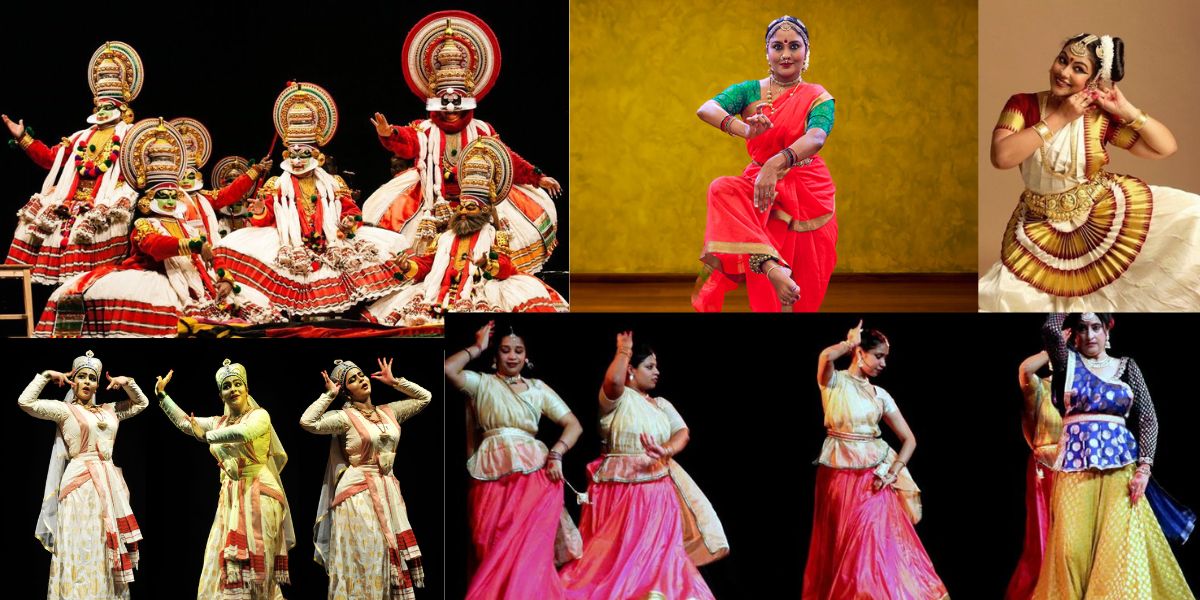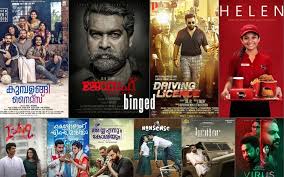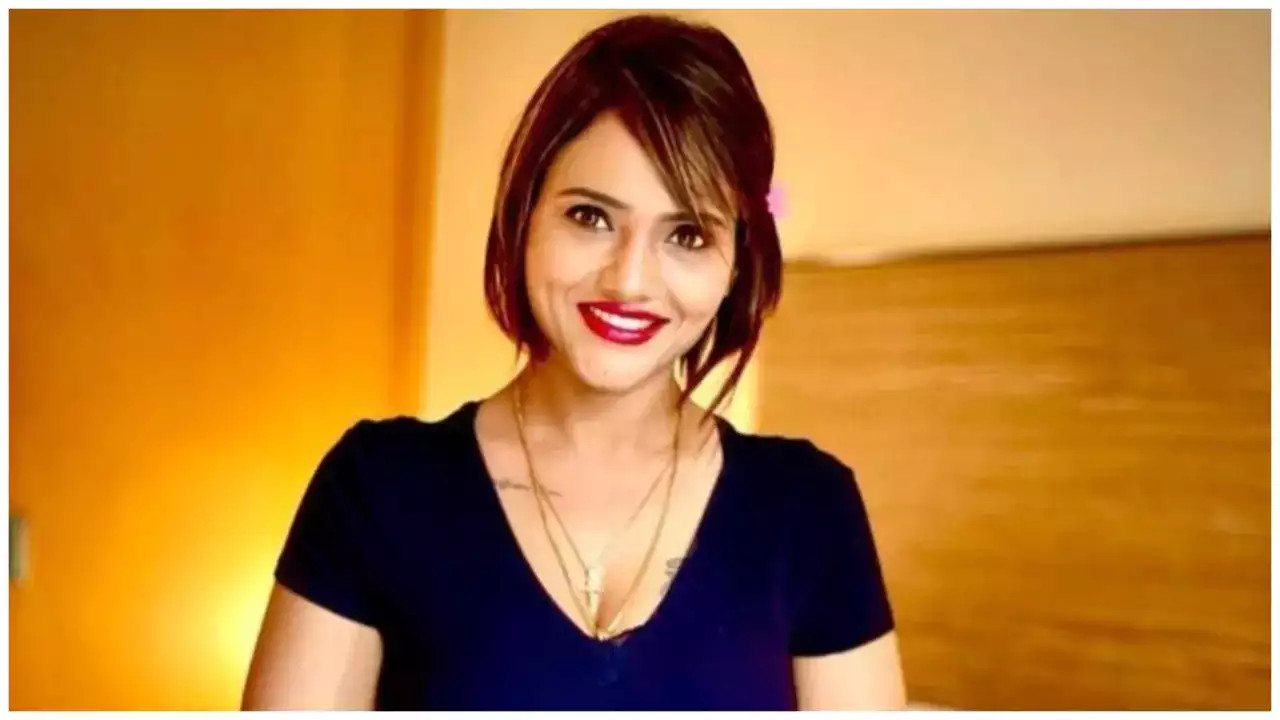classical dance of India: India is a place of diverse cultures, with each territory showcasing a unique dance form. The country boasts a variety of dance traditions entrenched in history, mythology, and spirituality, representing its vast historical past and geographical variability. Every dance tradition in India tells its own distinctive story about its locality.
Classical Dance Forms of India
Each region offers several dances, and the traditional classical dances of India are much more than just body motions. Long ago, these dance styles were regarded as a form of training and an opportunity to dedicate oneself to God through music. Here is a compilation of the best 15 traditional dance forms in India, highlighting the stunning variety of Indian dance heritage.
Top 15 classical dance of India 2025
1. Ghoomar
2. Rouf
3. Garba
4. Bhangra
5. Giddha
6. Odissi
7. Kuchipudi
8. Manipuri
9. Kathakali
10. Kathak
11. Sattriya Dance
12. Mohiniyattam
13. Lavani
14. Bihu
15. Theyyam
1. Ghoomar – classical dance of India

Donning tonnes of jewelry and magnificent clothes, individuals of Rajasthan dance to the rhythms of music to demonstrate their traditional dance technique. Ghoomar features interesting circles of motion accompanied by hand gestures.
| Origin | Rajasthan |
| Composed By | Kruti Mahesh and Jyoti D Tommar |
| Started By | The Bhil Tribe |
| Started In | Ancient Days (18th Century) |
| Specialized Teacher for this Dance Form | Jyoti Bhatt, Ila Dalal, Dr Rekha Thakar, Shrimati Usha Sahai, Vimla Joshi |
Also Read: TOP 7 BEST HARMONIUM BRANDS IN INDIA JUNE 2024
2. Rouf – classical dance of India

Female performers execute Rouf, a calming dance form, to conventional Kashmiri songs to mark festivals and major events in Kashmir.
| Origin | Kashmir |
| Started In | Several Years Back |
| Specialized Teacher for this Dance Form | Raja Bilal, Veena Pandita, Shafiqa Qadri, Nargis Khatoon, Shameema Akhtar |
Also Read: TOP 15 BOLLYWOOD GREATEST INDIAN SINGERS NAME LIST 2024
3. Garba

This ancient form of dance, devoted to the Goddess Durga, originated in Gujarat. Dancers execute this art form as a couple to traditional Gujarati music using sticks. Initially, dancers form a circle, representing the developing life (fetus) in the womb. In contrast, Garba is danced around the image of Goddess Durga, the heavenly mother. People perform this dance during Navratri to honor the Goddess.. The dancers move in circles to represent how time in Hinduism works in cycles. This implies that events such as birth, life, death, and rebirth occur repeatedly. Despite the endless journey, one thing remains permanent, the Goddess. She remains unmoved while everything else moves. The dance aims to convey the message that God, represented as a woman in this example, is the one constant in the world we live in
| Origin | Gujarat |
| Started In | Ancient Days (15th Century) |
| Specialized Teacher for this Dance Form | Mallika Sarabhai, Uma Trived, Nirupama Rajendra, Sheetal Bhatt, Kumudini Lakhia, Kiran Soni Gupta |
Also Read: 30+ BOLLYWOOD OLD HINDI SONGS LIST
4. Bhangra

This dance form evolved as a form of community expression, initially performed by farmers to celebrate a successful harvest. The dance’s name is taken from the Punjabi term “bhang,” which refers to a historical cannabis drink that is commonly consumed during celebrations. The rise of Bhangra may be traced back to the integration of numerous influences, such as Punjabi folk traditions, martial arts actions, and the community’s joyful mood. Bhangra evolved, incorporating a variety of characteristics like fast footwork, rhythmic clapping, and vigorous beats from the dhol, an ancient drum. As the Punjabi community expanded abroad, Bhangra earned international acclaim, merging with current music genres and dance styles.
| Origin | Punjab |
| Started By | Punjabi Farmers |
| Started In | The late 1800s |
5. Giddha

It is a feminine counterpart to Bhangra and also has its roots in rural Punjabi traditions. This beautiful dance form is historically executed by women at various festivals and special events. It is distinguished by its circular shape, rhythmic clapping, and sophisticated footwork. The dance is frequently accompanied by the singing of traditional Punjabi folk songs known as “bolis,” which tell stories of love, everyday life, and cultural traditions. It celebrates Punjabi women’s vivacity and tenacity, capturing a sense of togetherness and joy.
| Origin | Punjab |
| Started By | Punjabi Women |
| Started In | The late 1800s |
6. Odissi

This is an eastern Indian state, is where this art form started. The ancient dance originated from Hindu temples in Odisha. The majority of the motions and movements (Mudras) were influenced by sculptors and statues from India’s ancient temples. The dance is performed to portray mythological tales about Hindu gods such as Shiva and Surya. The musicians accompany the dance with a mythological story and a Hindi poetry set to music. It is one of India’s oldest dance genres that continues to be performed today. This dance is usually done by female dancers and features over 50 interesting mudras (body moves).
| Origin | Odisha |
| Started By | Kavichandra Kalicharan Pattanayak & Kelucharan Mohapatra |
| Started In | 2nd century BCE |
7. Kuchipudi

The dance form originated in A.P. and is often regarded as the most challenging type of traditional dance in India. It incorporates both singing and dance by the artist, demanding more ability and commitment than any other art form in India. More than simply a dance, it is a religious ceremony that includes sprinkling holy water, burning incense sticks, and praying to God. Initially, male dancers, notably Brahmins (the upper caste of society), performed it solely in temples, but it has since gained popularity among women and is now largely executed by female performers.
| Origin | Andhra Pradesh |
| Started By | Sidhyendra Yogi |
| Started In | 17th century |
8. Manipuri

As you wander across North-east India, filled with ancient customs and distinctive civilization, this dance form serves as a vital symbol to symbolize the state of Manipur in the region. This dance form depicts the amorous relationship between the Hindu gods Radha and Krishna, also known as RaasLeela. Performers use traditional Manipuri costumes and makeup to tell the story of the two deities. Story recitation and music composed by Indian traditional musicians accompany the dance.
| Origin | Manipur |
| Started By | King Bhagyachandra |
| Started In | 18th century |
9. Kathakali

It is an ancient Indian dance form that involves narrative. In the country’s language, this dance form translates as “storyteller”. The dance form which originates in Kerala, is one of India’s most well-known and holy dance styles. It is based on the Ramayana and Shiva mythological tales. The dance form features interesting facial gestures as well as heavy costumes that comprise traditional face masks and body paints (usually green). Soppanam refers to music that simply comprises voices. The dialogue between the dancers, which depicts both evil and good, serves to portray the story of epic Hindu mythology tales. Simply amazing to see!
| Origin | Kerala |
| Started By | Ancient Kerala People |
| Started In | 17th century |
| Specialized Teacher for this Dance Form |
|
10. Kathak

| Origin | Uttar Pradesh |
| Started By | Ishwari |
| Started In | 400 BCE |
11. Sattriya Dance

Mahapurusha Sankaradeva, a Vaishnava saint and Assamese reformer, invented the Sattriya dance in the 15th century AD. This dancing form originated in the Sattras or Vaishnava Maths, therefore it remained a continuous legacy. This dance was an artistic technique to convey legendary truths. Traditionally, this dance was done by male monks called bhokots. However, the practice has evolved in numerous ways. The focus is not solely on mythology, and the performances are not confined to the Sattras. Even ladies can do the Sattriya dance onstage.
| Origin | Assam |
| Started By | Mahapurusha Sankaradeva |
| Started In | 15th Century AD |
| Specialized Teacher for this Dance Form | Guru Jatin Goswami, Guru Ramakrishna Talukdar, Guru Ghanakanta Bora, Guru Indira P. P. Bora, Guru Pushpa Bhuyan |
12. Mohiniyattam

Mohini is Lord Vishnu’s feminine form in Indian mythology, and the meaning of Attam in Malayalam is rhythmic movement, therefore it is appropriate to follow the celestial enchantress dance. It is the second oldest dance form in Kerala. This ancient Indian dance form has its origins in the ancient Sanskrit scripture Natya Shastra. It is typically performed by ladies using a Carnatic music repertoire, singing, and acting in a drama. At times, the artist sings the song, which is a characteristic combination of Malayalam and Sanskrit known as Manipravalam.
An assortment of instruments, including Mridangam, Madhalam, Flute, Idakka, Veena, and Kuzhitalam, deliver music in ragas, executed in a slow melodious way. Although the Lasya dance is frequently characterized as soft, beautiful, and feminine, it also includes a fierce Tandava dance dedicated to Lord Shiva. Despite its widespread acceptance, laws derided the dance as a devadasi women trafficking network during the British Raj. Kerala natives restored and rebuilt Mohiniyattam after lifting the protested prohibition in 1940.
| Origin | Kerala |
| Started By | Lord Vishnu |
| Started In | 200 BCE |
| Specialized Teacher for this Dance Form | Guru Kalamandalam Kalyanikutty Amma, Guru Bharati Shivaji, Guru Dr. Deepti Omchery Bhalla, Guru Kalamandalam Satyabhama, Guru Gopika Varma
|
13. Lavani

Lavani, a Maharashtra dance form was established in the state of the Maharashtra kingdom. The female-oriented dance combines ancestral tunes with stories about gods. Lavani is derived from the word Lavanya, which means “beautiful.” Aside from promoting the Marathi folk theatre, this dance genre served as an energy booster during the 18th-century battles. Lavani exists in two forms: intellectual (Nirguni Lavani) and sensuous (Shringar Lavani). The dance form is executed at a forceful and swift foot-tapping rhythm to the sounds of the Dholak. This dance’s storylines or subjects center on spirituality, governance, the community, and, most notably, love. Dancers are draped in a nine-yard saree with gold jewels. The dance was originally conducted as a form of prayer in local temples, but it is now a passionate dance performed to thumping beats that serve as a sociopolitical satire.
| Origin | Maharashtra |
| Started By | Maratha Lords and Kings |
| Started In | 18th-19th Century |
| Specialized Teacher for this Dance Form | Madhu Kambikar, Surekha Punekar, Manjusha Soman, Shakuntala Nagarkar, Sandhya Mane |
14. Bihu

During the Bihu festival, young men and women execute this joyful Assamese folk dance. The dancers perform a routine of speedy hand activity, lightning-fast steps, and synchronized hip swaying while dressed in traditional Assamese clothes and gorgeous ornaments. Bihu, which symbolizes the start of the spring season, highlights Assamese joy and tradition and is presented on the day of Rangali Bihu. The conventional melodies for the show are played on the dhol, xutuli, toka, banhi, and gogona instruments. The exact history of Bihu is unknown, however, sources indicate that it originated with the Bisu dance performed by Upper Assam communities such as the Sonowal Kacharis, Deoris, Moran, Chutias, and Borahis. The dancing form is well-known not just in India, but also around the world. This renowned Indian dance was featured at the London Olympics in 2012.
| Origin | Assam |
| Started By | Derived from the Faat Bihu dance |
| Started In | 1694 |
| Specialized Teacher for this Dance Form | Ranjit Gogoi, Bhabananda Barbayan, Pranab Jyoti Das, Dr. Pratibha Sharma, Madhurima Choudhury |
15. Theyyam

In Kerala, we bring our wonderful tales to life via art, with Theyyam being one of the most prominent examples. This ancient art form evolved in North Kerala and uses dance, mime, and music to convey the state’s mythology. Theyyam upholds the ideas of ancient tribes that enjoyed champions and ancestral deities. The dance incorporates traditional instruments such as Chenda, Elathalam, Kurumkuzal, and Veekkuchenda. There are about 400 different Theyyams, each with its song, style, and dance, including Raktha Chamundi, Kari Chamundi, Muchilottu Bhagavathi, Wayanadu Kulaven, Gulikan, and Pottan. Each artist represents a powerful hero with extensive make-up and vivid clothes. The beautiful headgear and embellishments create admiration. From December to April, numerous temples in Kannur and Kasaragod host Theyyam plays. North Malabar’s Karivalloor, Nileswaram, Kurumathoor, Cherukunnu, Ezhom, and Kunnathoorpadi have annual Theyyam performances (Kaliyattam), which draw enormous spectators.
| Origin | Kerala (Kolathunadu) |
| Started By | festival of Kaliyattam |
| Started In | 1,500 Years Ago |
| Specialized Teacher for this Dance Form | M. V. Narayanan, Chandran Chembakassery, Kandanar Kelan, Kavungal Chathukutty, Perumthachan Theyyam Performer |
Faqs Regarding Classical Dance of India
-
Which are the most ancient Indian dance forms?
Bharatanatyam is India’s earliest dancing form.
-
How many distinct classifications currently exist for Indian dance forms?
In India, dancing genres are essentially divided into two categories: classical and folk dance forms. These dance forms emerged in various regions of India based on regional customs.
-
Are Kathak and Kathakali a similar type of dance?
Kathakali is not the same as Kathak, although, the two are Indian conventional dance styles of “story play” with storylines traditionally borrowed from Hindu epics and Puranas.
-
What is the Gujarati dance?
Garba is an act of dancing, a religious, and communal celebration that originated in Gujarat, India. Garba is a group circle dance popular in Gujarat, India’s northwestern state. The term “Garba” is also used to describe the occasion at which the garba is played.
-
Which is the Maharashtra state’s dance?
Lavani is a famous musical genre in Maharashtra, India. It is known for its assertive tempo. It is an ancient melody and dance that is typically executed to the rhythms of the Dholki, a percussion instrument.
conclusion
As we come to the end of our tour across India’s diverse artwork of folk dances, we’ve seen rhythmic beats, colorful costumes, and rich cultural stories passed down through generations. Every move and pulse contains an element of India’s spirit, and by honoring these folk dances, we embrace the numerous tales that define who we are. This classical dance of Indian forms is more than just moves and gestures; they are live manifestations of our heritage, culture, and the collective spirit of a community united by a love of dancing. Moreover, we hope you enjoyed our ancient artworks of Indian Dance Forms. However, let us know if we missed any by chance. Until then, Cheers!










Add Comment